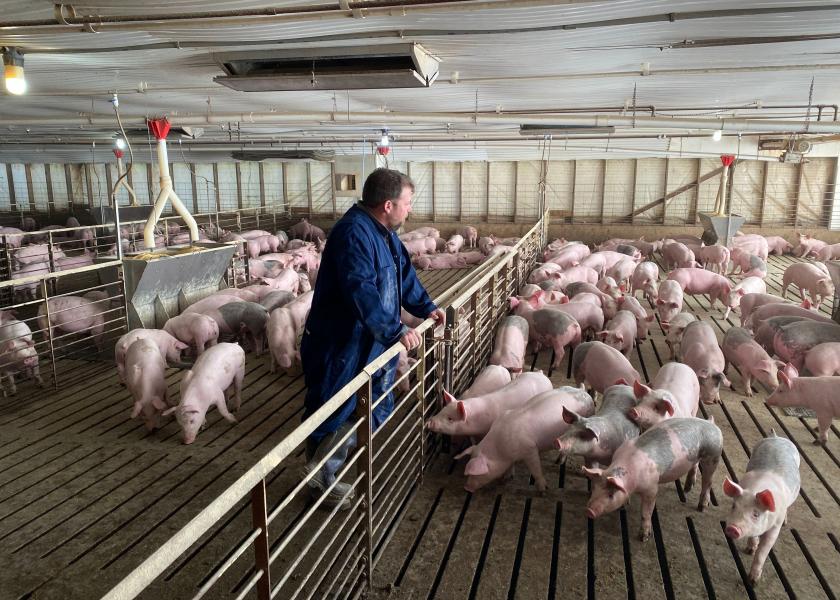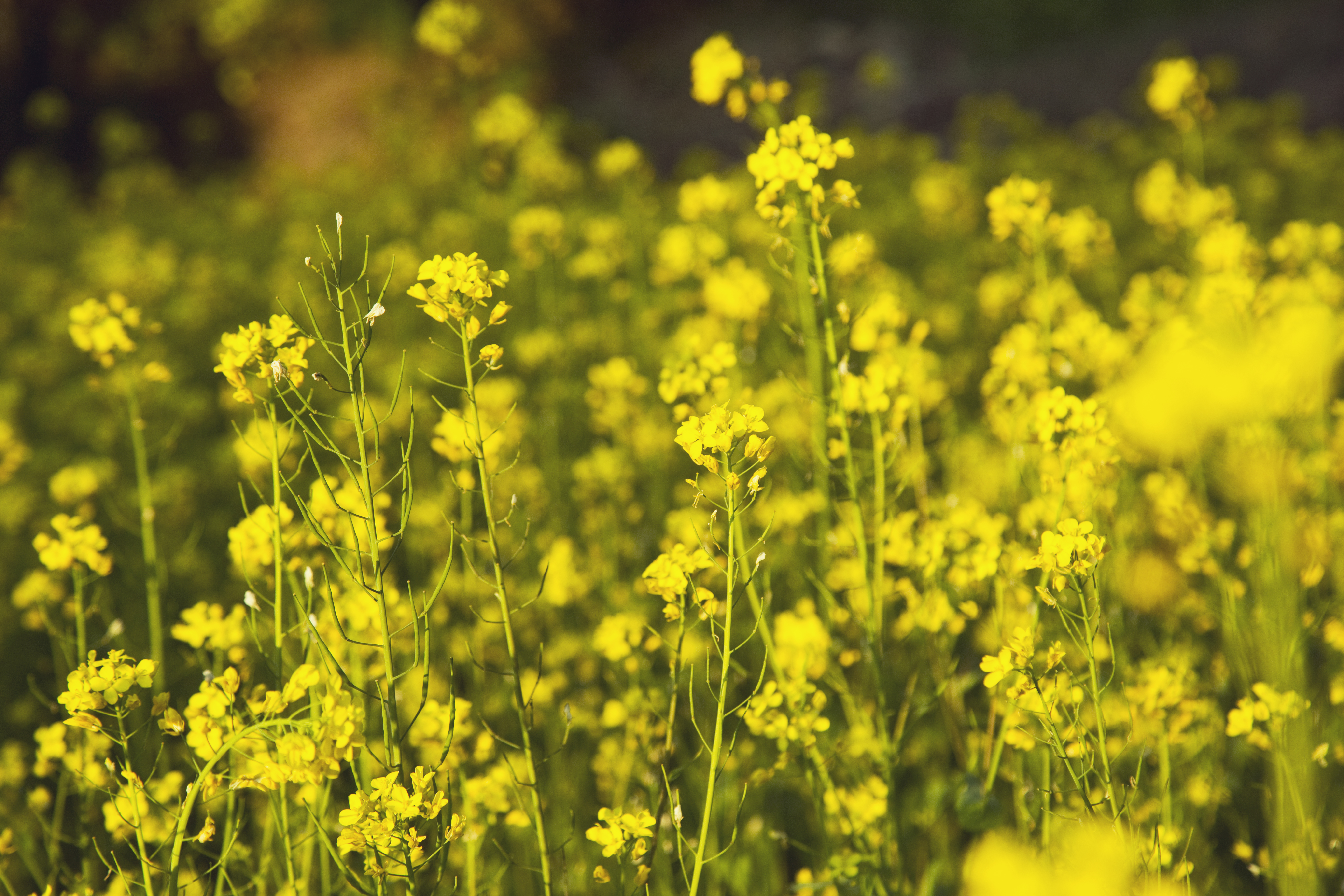Never Status Quo

Iowa farmer Jason Russell looks to the Future as he continually tasks himself with efficiency, sustainability.
For Jason Russell, conservation is all about the future.
Through the conservation and stewardship practices the Iowa soybean farmer employs in his operation, Russell hopes to create a promising chance for those that succeed him.
“We would like to provide opportunities for the next generation to farm by improving methods, soil
conditions and productivity on our farm,” Russell explains.
With tomorrow top of mind, the operation focuses its efforts on taking care of the soil and applying
innovative production methods to maintain efficiency, so the farm can take care of Russell’s family when
they need it most.
From the Ground Up
Located in east central Iowa near Monticello, Russell’s Big Boulder Farms include both crop and livestock production. Russell and his wife, Sarah, maintain a 30,000-unit custom wean to finish hog operation in addition to a small beef cattle, sheep and poultry farm. They also grow corn, soybeans, chickpeas and hay. The couple has three small children, and Sarah works off the farm for the Grant Wood Area Education Agency as an induction coach for new teachers.
Big Boulder Farms span highly erodible soils that are prone to nutrient losses without proper management. Through extensive use of cover crops, Russell has been ableto both improve soil health and increase yields over time on his farm.
“The cover crops store nutrients that get utilized later in the year,” Russell says. “They also help alleviate compaction and allow for better infiltration.”
Soil and tissue testing on 2 1/2 acre grids every four years assists Russell in monitoring nitrates in the field.
“It’s good to know that our pHs are correct, so that if we need lime then we can add it,” Russell says. “If we need a nutrient like phosphorus or potassium, we can add that. We also do soil testing once a year by zone to try and determine what the microbial life in our soil is, and if it’s healthy.”
With cover crops planted on 100% of his acreage, Russell is constantly learning the benefits a plant species might provide to his operation. For example, with a summer crop, Russell uses a mixed variety depending on the purpose of the field. Ground targeted for grazing will be planted in a different cover crop than one needing additional organic matter or one that calls for control of a soil pest.
Nematode issues can be suppressed by planting mustard because the brassica family works to fumigate the soil by producing a chemical when it decomposes that is toxic to the pest, Russell says.

“Your options are a lot more numerous as far as what you can plant for cover crops in July because they’re going to have time to grow, and you’re going to get some good out of them,” he adds.
Another cover crop, cereal rye, ties up nitrogen which can be negative for a corn crop. However, Russell says he was able to use the variety in a corn-on-corn rotation by terminating the cover crop before it was problematic for the corn.
“(By using cover crops) you’ve got that healthier soil,” he explains. “The poorer ground is better because there’s more water-holding capacity. Overall, I’ve seen a gain in my production history with cover crops.”
For the Environment and Beyond
While working to protect the soil plays a key role in the success of Russell’s operation, use of innovative technology is also pivotal in adding to its bottom line.
Russell says solar panels have been a great tool for the farm’s hog operation because the fans and augers inside the barn help consume electricity.
“Generally, the hottest part of the day is when a solar panel is working its best,” Russell says. “And that goes in conjunction with the fans and cooling in a hog barn.”
Use of the solar panels is through a rural electric cooperative, so excess power generated by the farm goes out on a grid with the farm receiving a small recovery fee for the energy, Russell says.
Solar and wind energy combined work to power another of Russell’s hog facilities. And, when all of the equipment works properly, that allows the operation to eliminate its electric bill— a savings that he says helps install more efficient machinery.

“First of all, it allows us to pay for the equipment,” he explains. “Then, it allows us to put in more efficient equipment like a well pump with a variable pressure system, which takes about half the electricity of a regular well pump.”
Switching the farm’s lighting to LED has also proved to be more economical, cutting electricity use by one-third, according to Russell. Moving to wet/dry feeders inside the hog barns further helps the operation maintain optimum productivity.
“We use a lot less water and feed to produce hogs with less manure in the end,” he says. “I think conserving water and resources and being more efficient are just all-around good practices.”
While those tools help Russell enhance the efficiency of his operation, his efforts in environmental quality go far beyond water and electricity. From wildlife food plots to pollinator habitats, Russell seeks out unique means to further his conservation practices.
Planting windbreaks help control blowing and drifting snow, protect structures and provide habitat for wildlife. Russell also says very sensitive farm ground with steep slopes and highly erodible qualities have been placed in the Conservation Reserve Program, making it a good environment for prairie and wildlife plantings. His grandfather also established a riparian stream buffer in three-acre strips that attract woodland creatures.
“Preventing soil erosion is the most prevalent reason for a lot of what we do,” Russell explains. “As we continue to learn about beneficial wildlife and insects, I’m sure we will come up with more hard evidence why these small areas of habitat are important. A good example is alfalfa fields near pollinator plots and woodlands rarely have a need for insecticide as the beneficial insect populations keep pest populations within acceptable levels. Hawks and eagles eat small rodents that often make farming with cover crops and no-till a challenge. We are learning every day!”
Bound by a Connection
As Americans are more removed from the farm than ever before, Russell realizes the need to connect with consumers and build a bridge to sustainable food production.
With sights set on producing a more diverse crop rotation that includes the addition of edible food grains, Russell works to adapt specialty crops in the scope and growing conditions of his operation.
Chickpeas and flax have added to the farm’s diversity and created a keen interest in his local community. With more than half a million people within an hour’s drive of Russell’s farm, he hopes to reap additional rewards by tapping into the local food market.
“I had a lot of phone calls,” Russell says. “They were like: ‘Why is your field that pretty color of blue?’ When flax blooms, it’s beautiful. It’s just solid blue flowers.”
Russell maintains open communication with his neighbors, too, planning and scheduling manure application, assisting with snow removal and providing pork to those close by. He also conducts positive
messaging on social media to share his farm story in addition to hosting tours for a variety of audiences and speaking to media outlets about conservation and regenerative agriculture.
Active in a number of farm organizations, Russell is a district advisor for the Iowa Soybean Association and over the years has been the recipient of countless environmental stewardship awards.
According to Theo Gunther, who works with environmental programs and services for the Iowa Soybean Association, Russell continues to be an example and advocate for integrating conservation practices into corn and soybean production systems in the state.
“He leads by example using low disturbance, high ground cover methods to efficiently obtain high crop yields and protect natural resources,” Gunther says. “Through his actions he is among the farmers that help set the bar for his peers and the industry.”
Russell’s wife, Sarah, adds that her husband is constantly working to share a positive message about agriculture with others and to better their operation.
“He’s always trying to look for more ways to improve, such as the cover crops and exploring new ways to continue our farming practices that are more innovative, too,” she says. “He’s been able to expel a lot of perceptions of the agriculture industry by having those conversations and having that knowledge base and then relating it to people in a way they can understand what we’re doing on our farm.”
And at the end of the day, Russell’s message is still about protecting the
resources for future farmers.
“I strive to be efficient and sustainable, regenerative generally in the field is what I’d like to see because we’re losing soil every year,” Russell concludes. “We need to regenerate it, not just sustain it.”







